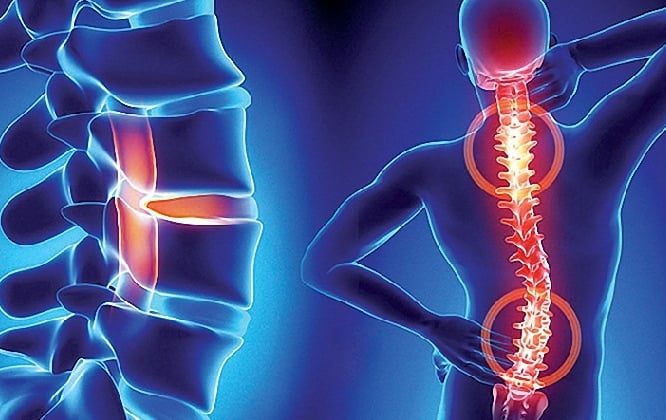Here is how disc prolapse typically occurs
Disc Degeneration - Aging and normal disc degeneration over time can lead to a reduction in the elasticity and strength of the outer layer of the disc.
Disc Damage - Traumatic injuries, such as impacts or falls, can cause damage to the disc and increase the risk of prolapse.
Improper Movement - Repetitive improper movements, especially lifting weights without proper body mechanics, can increase pressure on the disc and cause prolapse.
Genetic Predisposition - Some individuals may be genetically predisposed to disc problems, which can increase the risk of prolapse.


Disc prolapse can press on nerves nearby, leading to pain, tingling, weakness, or loss of sensation along the path of the affected nerve. Prolapse most commonly occurs in the lower back (lumbar spine) or neck (cervical spine).
Diagnosis is typically based on symptoms, physical examination, and confirmation using diagnostic methods such as magnetic resonance imaging (MRI) or computed tomography (CT).
Physical exercise can have a significant impact on managing disc herniation symptoms, but caution should be exercised in selecting the type of exercises to avoid exacerbating the condition.
It is important to note that before starting any exercise program, especially with disc herniation, consultation with a healthcare professional is recommended.
Our Full Fit team can create a personalized exercise plan tailored to your condition and monitor your recovery.
Disc prolapse, also known as spinal prolapse or disc herniation, refers to a condition in which the inner, gel-like part of the disc between the vertebrae protrudes or passes through the disc's outer covering. The discs between the vertebrae consist of an outer layer of tough tissue and an inner, gel-like core. Prolapse occurs when the inner part of the disc protrudes through a damaged outer layer.
